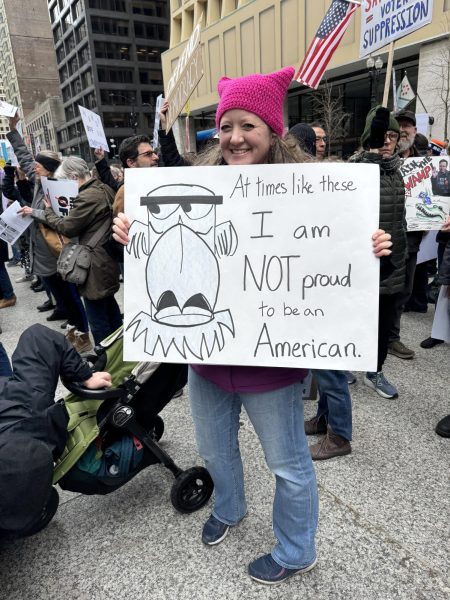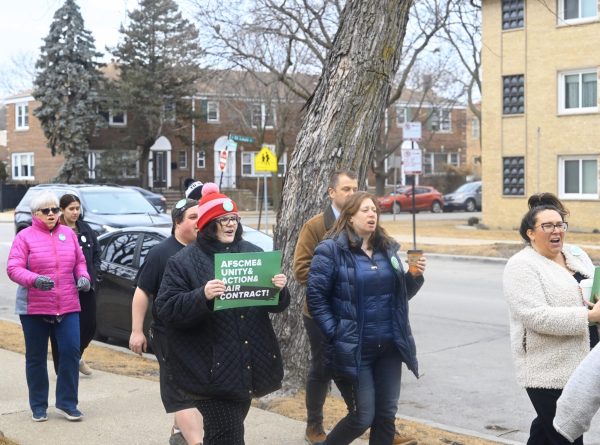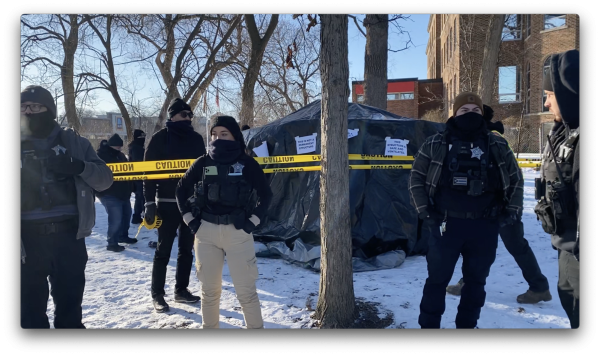Pedroso Center Hosts Sign Language Luncheons
Recent News
The Angelina Pedroso Center now welcomes NEIU community members to sit down for silent luncheons Wednesdays at noon.
It won’t be the cold shoulder that will cause those tight lips, but is intended to be a form of encouragement for guests to step out of their comfort zones and use American Sign Language (ASL) as the primary means of communication.
Douglas Lawson, director of Student Disability Services, said that those behind the project hope that it may bring awareness for students with disabilities.
“(The silent lunch) is to give people the sense of what it is like for a deaf person — or someone who is hard of hearing — to engage in a conversation with somebody who has their full range of hearing,” Lawson said.
Lawson said that though ASL is the preferred communication for these luncheons, it isn’t the only form that may be used. He explained that gesturing and writing down notes are perfectly acceptable, especially since that is how many deaf people communicate with those who can hear but don’t sign.
“Who really has the disability, is it the deaf person?” Lawson asked. “Or is it the fact that we both can’t communicate with each other?”
He said that a major issue are complaints from people who believe it’s unnecessary for the deaf to be accommodated in the public sphere — in areas such as taking classes — where conversation is necessary and expect them to either bring an interpreter, receive speech therapy or use some sort medical device such as a hearing aid or a cochlear implant to improve their hearing.
“That attitude is the disability,” Lawson said. “Not the deaf person.”
Lawson himself identifies as deaf and said he can understand the problems other deaf students at NEIU have to endure. A program he works on called The (Dis)Ability Project is designed provide training for NEIU staff so they may be better able to assist these students and spread awareness as well.
The idea for these lunches came from several of the staff and faculty members talking amongst themselves about what is the best way to try and communicate with deaf students.
Lawson thought the most ideal option would be to sign but several of the faculty members didn’t know how. Many were willing to remedy the situation by considering taking an ASL course — and from there the thought came about setting up a time where people can actually sit down and try to pick up some sign language by immersing themselves in ASL conversations. During these luncheons a book on ASL will be provided to help those who know little to no sign language.
Genao-Homes said that she had learned ASL before but after a great length of time not using the language, she began to forget. Now, she hopes that through these lunches she may be able to pick up some of what she lost over the years. She also said she was excited that the Pedroso Center will be able to offer this opportunity on a weekly basis. She said she believes the luncheons will also “help people think about differences in other ways” besides race or ethnicity and hopefully bring more open-mindedness towards students with disabilities.
According to Genao-Homs,there have been usually four or five attendees at the luncheons. But she said there will soon be a campaign and announcements to spread the word about the silent lunches to try and bring more students in to participate.
Currently, there is a class at NEIU for learning sign language, however this is not a course for any specific major or minor and offers no class credits. It is part of the Continuing Education program at NEIU. It also only costs $99 to take the class. NEIU does not currently offer ASL as part of a foreign language program. In the future, these silent lunches and the (Dis)Ability Project may have an impact on whether NEIU may in fact offer ASL courses for credit in the future.
Your donation will support the student journalists of Northeastern Illinois University's The Independent, either in writers' payment, additional supplies and other items of note. Your contribution will allow us to purchase additional equipment for writers/photographers/illustrators and cover our annual website hosting costs.
Laura Rojas








